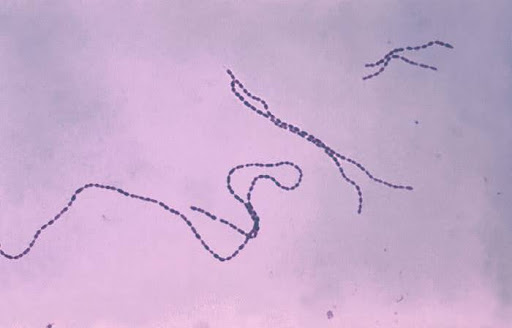
Exercise may manage blood pressure through the gut microbiome
The bacteria Coprococcus eutactus, shown above, produces short-chain fatty acids or SCFAs. Exercise increases SCFA-producing bacteria in the gut that may help regulate blood pressure. (Image: V. R. Dowell and CDC Public Health Image Library)
A North Carolina A&T scientist is promoting exercise in marginalized communities to target cardiometabolic disease through the gut. Marc Cook, a gut and vascular exercise immunologist, studies how exercise can change the gut microbiome—the community of microorganisms in our intestines—and help control blood pressure.
At the New Horizons in Science briefings organized by the Council for the Advancement of Science Writing at the ScienceWriters2024 conference in Raleigh, N.C., Cook explained how his research led him to his work as associate director of research for NC A&T’s Center of Excellence for Integrative Health Disparities and Equity Research (CIHDER). CIHDER aims to address health disparities—preventable differences in the burden of disease, injury, and violence that negatively impact marginalized groups—in regional communities. One area of focus is cardiometabolic disease. Hypertension, or high blood pressure, is a risk factor for cardiometabolic disease that disproportionately affects African Americans.
Studies have linked hypertension with low gut microbial diversity, a topic Cook knows much about. Early in his research career, Cook was interested in how exercise could protect against inflammatory bowel disease. Unexpectedly, he discovered that mice that voluntarily ran on a wheel had more beneficial bacteria in their gut microbiome, suggesting that exercise could affect gut microbial diversity.
In another study, Cook and other scientists recruited a group of healthy but sedentary college students into an exercise program. After six weeks of exercising regularly but not changing their diets, students showed an increase in the gut microbes that produce short-chain fatty acids, or SCFAs. SCFAs reduce inflammation, prevent overgrowth of certain bacteria, and provide energy to the gut. SCFAs can also communicate directly with the cells that line blood vessels, called endothelial cells. Endothelial cells control vessel constriction and dilation to regulate blood pressure.
Cook wondered if these findings might provide clues to hypertension in Black athletes, who have a risk of sudden cardiac death five times that of white athletes.
In a follow-up clinical study, Cook recruited two groups of African-American collegiate athletes and sampled the microbes in their stool. One group had hypertension; the other did not. In this study, published in March 2024 in Physiological Reports, the scientists found less variety in the gut microbial communities of athletes with hypertension than in those without the condition. But there was no difference in the abundance of SCFA-producing microbes. Given that both groups of athletes followed an exercise regimen, this result was consistent with the previous findings that exercise boosts SCFA production.
Although this pilot study did not explain hypertension in athletes, it strengthened the evidence linking exercise and SCFA production. To connect all the dots, Cook needed to demonstrate the relationship between SCFAs in the gut and blood pressure.
Recently, Cook recruited two groups of African-American adults—those with and without hypertension—into a Phase 1 clinical trial measuring blood pressure after an SCFA called butyrate was delivered into the gut using an enema. Preliminary results suggest that participants who received a higher dose of SCFAs had lower blood pressure throughout the day, reinforcing the connection between SCFA abundance and lower blood pressure.
This study also reinforced another kind of connection, through CIHDER’s commitment to engaging with marginalized communities. On recruiting trial participants, Cook said, “I told them the truth. Here is what is happening. Here might be the reason your blood pressure is high. Will you help me figure it out?” He listened to their concerns, he offered them help, and they accepted.
Together, Cook said, these studies illustrate how exercise can naturally increase SCFA abundance in the gut to help maintain normal blood pressure.
To effectively target the hypertension disparity in Black communities, CIHDER aims to implement programs that target more than the at-risk individuals. “You need community to be healthy,” Cook said. In Cook’s lab, researchers and participants perform exercise interventions together. As Cook put it: “We’re doing this together.”